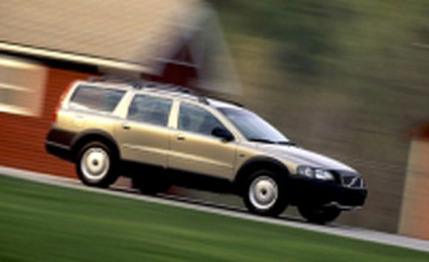 Road Test
Road Test
You probably won't be bowled over to hear there's an ongoing boom in SUV sales. A seemingly endless line of them continues to roll out of showrooms with no end in sight, despite recent extortion at the petrol pump. This phenomenon has provoked warm and moist feelings in the boardrooms of those manufacturers who have been in a position to supply this demand -- after all, sport-utility vehicles generate higher profits than passenger cars -- and wistful watching from the sidelines by manufacturers who lack sport-utilities of their own.
You may also have noticed that the automakers who have no SUVs for sale have subdivided into two distinct groups -- those who have been willing to step up to the enormous development costs associated with producing an all-new vehicle, such as the BMW X5; and those who have made do by raising the ride height of their station wagons, bolting on butch body cladding, adding all-wheel drive, and dreaming up a marketing program that uses the words "active lifestyle" at least 20 times per press release.
Subaru pioneered the realm of SUV-like wagons with its Outback. Volvo's V70 XC (for "cross country") was a me-too latecomer, proving, once again, that no idea is too good not to imitate. Volvo introduced the XC version of the V70-series wagon in 1997 as a '98 model. Much to the delight and surprise of the marketing gurus, it quickly became a brisk seller, accounting for 45 percent of total V70 wagon sales in 1999. Hoping to continue that sales success and build on it, Volvo decided not only to update the XC but also to make it look more like a "real" SUV and less like a wannabe. Does that sound like more body cladding? You bet.
Although the first-generation XC was only mildly different in appearance from its V70 siblings, this second-generation wagon gets a complete macho makeover. To give the new, more curvaceous sheetmetal that off-road bruiser look, the designers at Volvo decided to spruce it up royally with matte plastic cladding -- everywhere. The nose of the XC, except for the chrome grille, is molded out of this scratch-resistant plastic, as is the rear bumper cover. There is a large air intake opening in the lower part of the front air dam that is accented underneath with what looks like a titanium-hued skid plate. It's actually a plastic accent, although the XC does come standard with a credit-card-thin front skid plate you have to crawl under the car to see. The cladding continues around the front wheel arches, down along the lower part of the doors, and then around the back wheel arches into the rear bumper cover. It has an uneven texture to it, with small crevices like dried lake mud, and the cladding comes in dark brown or dark blue, depending on the car's paint color. According to the designers at Volvo, the dark-colored cladding not only protects the paint from being scratched while bushwhacking but also makes the XC look taller and more SUV-like.
The taller appearance of the XC isn't all smoke and mirrors. Its ground clearance is up an inch from the base vehicle's, to 8.2 inches. That matches the clearance of the Audi Allroad 2.7T Quattro and bests some truck-utes', such as the base Ford Explorer's (6.7 inches). The engineers at Volvo toyed with using an adjustable suspension system like the Audi's but decided it wasn't worth the extra cost and complexity. New, larger 215/65HR-16 tires and wheels necessitated a quarter-inch increase in wheelbase to 108.8 inches and a 2.3-inch increase in the front track relative to cooking-grade V70s. Because of the increased track, the XC gets slightly wider front fenders with more flare to them. Now, with all these changes, you don't have to look at the badging on the XC, as you did on the previous edition, to tell it apart from the on-road V70s.
Inside, the most readily visible change from a "regular" V70 is in the back. The XC now comes standard with a new, and industry-first, three-part 40/20/40 split rear seat. Any combination of sections can be folded down, or the center section of the seatback can be unlatched and flipped over into an armrest. The center-seat cushion and seatback can be removed and replaced with a beverage cooler that plugs into a 12-volt outlet in the rear cargo compartment, or replaced with a specially designed storage bag.